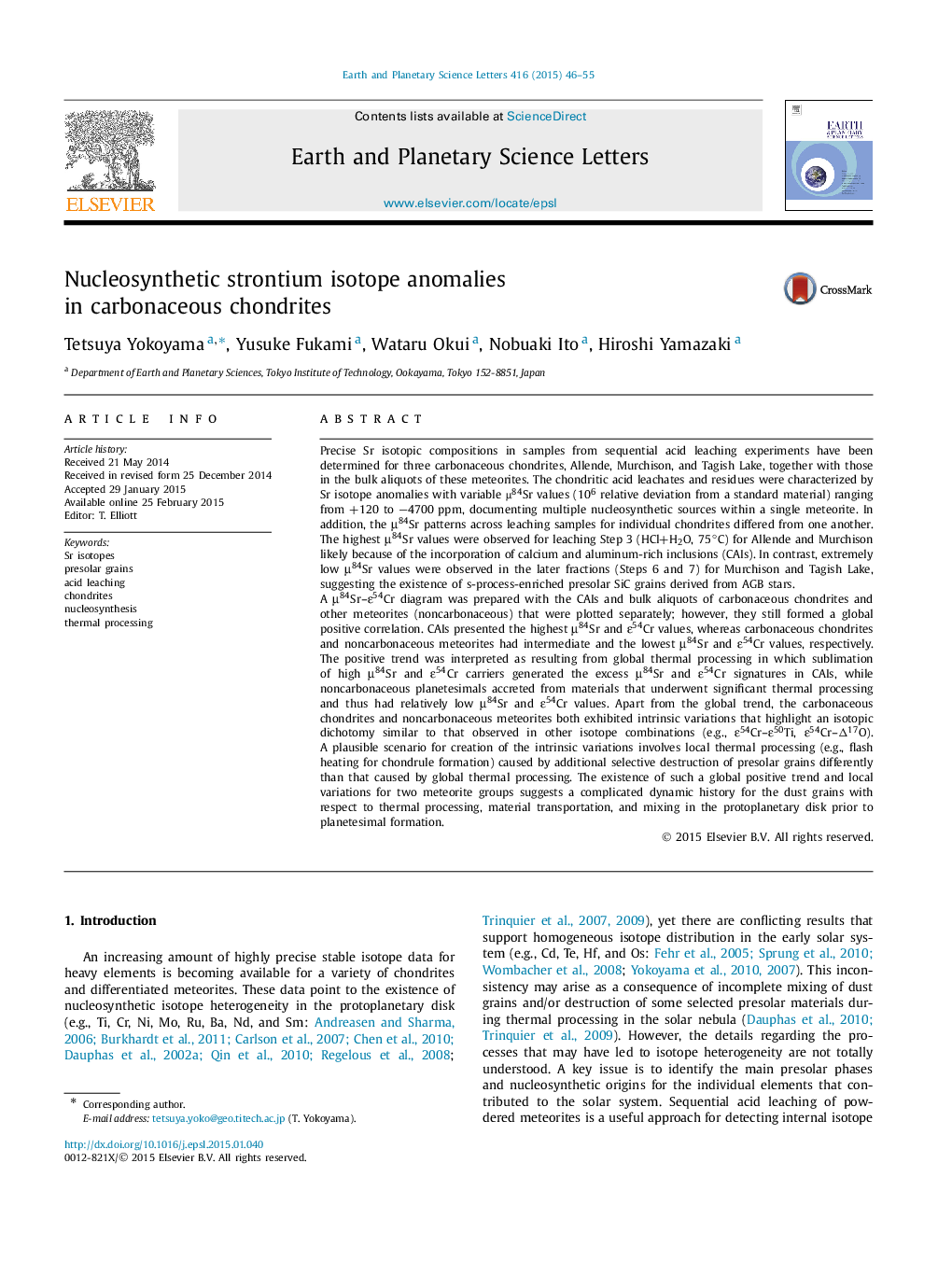| Article ID | Journal | Published Year | Pages | File Type |
|---|---|---|---|---|
| 6428521 | Earth and Planetary Science Letters | 2015 | 10 Pages |
Abstract
A μ84Sr-ϵ54Cr diagram was prepared with the CAIs and bulk aliquots of carbonaceous chondrites and other meteorites (noncarbonaceous) that were plotted separately; however, they still formed a global positive correlation. CAIs presented the highest μ84Sr and ϵ54Cr values, whereas carbonaceous chondrites and noncarbonaceous meteorites had intermediate and the lowest μ84Sr and ϵ54Cr values, respectively. The positive trend was interpreted as resulting from global thermal processing in which sublimation of high μ84Sr and ϵ54Cr carriers generated the excess μ84Sr and ϵ54Cr signatures in CAIs, while noncarbonaceous planetesimals accreted from materials that underwent significant thermal processing and thus had relatively low μ84Sr and ϵ54Cr values. Apart from the global trend, the carbonaceous chondrites and noncarbonaceous meteorites both exhibited intrinsic variations that highlight an isotopic dichotomy similar to that observed in other isotope combinations (e.g., ϵ54Cr-ϵ50Ti, ϵ54Cr-Î17O). A plausible scenario for creation of the intrinsic variations involves local thermal processing (e.g., flash heating for chondrule formation) caused by additional selective destruction of presolar grains differently than that caused by global thermal processing. The existence of such a global positive trend and local variations for two meteorite groups suggests a complicated dynamic history for the dust grains with respect to thermal processing, material transportation, and mixing in the protoplanetary disk prior to planetesimal formation.
Related Topics
Physical Sciences and Engineering
Earth and Planetary Sciences
Earth and Planetary Sciences (General)
Authors
Tetsuya Yokoyama, Yusuke Fukami, Wataru Okui, Nobuaki Ito, Hiroshi Yamazaki,
